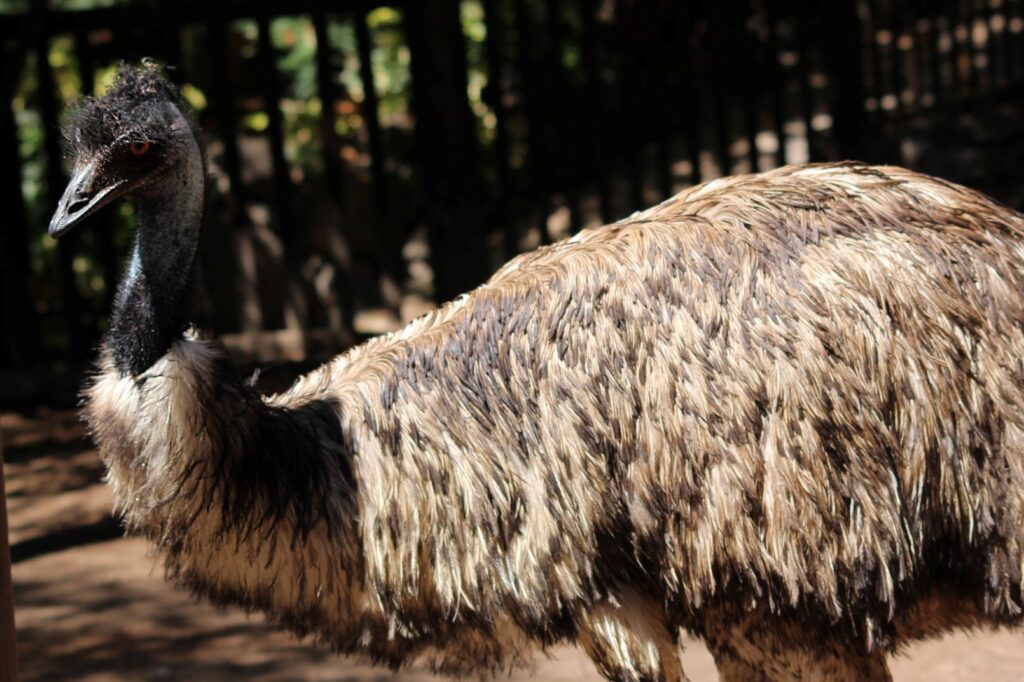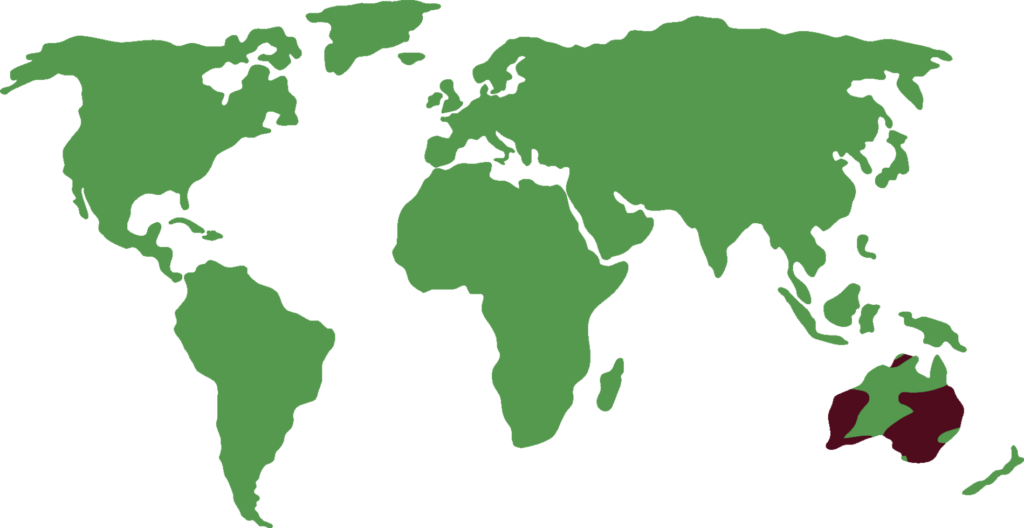COMMON EMU
Dromaius novaehollandiae

LENGTH

190 cm
WEIGHT

55 kg
LIFESPAN

13 years
Emus are non flying terrestrial birds that alongside Ostrichs, Rheas, Cassowaries, Kiwis, Elephant birds and Moas (these last two now extinct) from the Ratitae Clad and fall within the Struthioniformes Orders (Struthioniformes).
General characteristics
It is the second largest bird after the ostrich, reaching between 150-190 cm in height and a maximum weight of 55 kg.
An emu has a small head, a robust and bulky body with a long neck and strong legs with three toes that allow it to travel long distances with little effort. Emus can reach a speed of up to 50 km/h and take strides up to 7 metres. Their wings are rudimentary and small, so they are unable to fly.
The adults are black on the top of the head and neck, while the rest of the body is brown mottled with black. When they are still young, females are more covered with black feathers on their head and neck and the featherless areas take on a more intense blue color than males.
Feeding
Emus are omnivores. Their diet consists of insects, grass, seeds and fruit.
Behaviour
They are nomadic animals and move continuously in search of food. They usually live alone or in pairs, although occasionally they form groups of 4-9 individuals.
Emus are generally calm, but it´s better to keep a safe distance from them as they can kick mortally if they feel threatened. They are very protective of their young ones.
In the ventral region of the trachea they have a membrane that produces two types of sounds: “booms”, which resemble the sound a drum makes, and “grunts”. They use these sounds during the breeding season and when fighting. Males do not tend to use “booms” much.
Reproduction
Emus mate during the months of December to January, when it is summer in Australia, and lay their eggs from February to July. For the nest they choose a hidden place among bushes or trees and make a hole in the ground of about 2m in diameter.
Females lay up to 20 medium sized eggs (130x90mm) weighing between 450-650g, while males are in charge of incubating the eggs and look after the chicks. The incubation process lasts about 8 weeks, during which the male stops eating, drinking and defecating.
It takes approximately 6 months for the young to reach adult emu size.
Threats
These animals are hunting targets for farmers. They are bred in captivity for the commercialization of their products (meat, feathers, eggs and oil).
Distribution
Emus normally occupy sclerophyllous open forests and semi-arid plains of inland Australia.

Did you know?
Their eggs are green in colour.
They are good swimmers and they can cross rivers.
Unlike other birds, male Emus have a penis.
Conservation status
